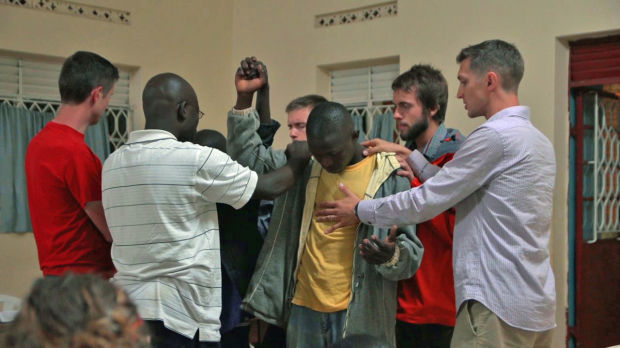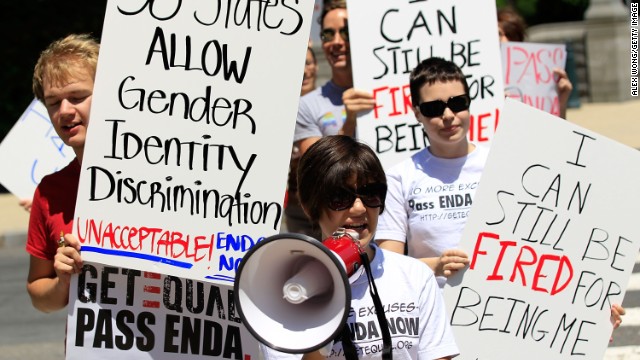1. People of all Sexualities and Gender Identities Appear in all Population Groups

Certain individuals in foreign countries claim that they did not have people of diverse sexual orientations in their society until westerners brought it to them. A variety of sexual orientations and gender identites are present in all populations, estimated at ranges from 2 to 10 percent of the population. It may not have always been identified as such, for the words “homosexual” or “homosexuality” did not exist until the late 19th century. The extent of its visibility certainly has varied from country to country.
2. Many People Overseas are Poorly Informed

People overseas are often even less informed about LGBT issues than are people in the USA. Definitions are often narrow and limited. Some would say this is an issue of degree, but the correction of misinformation is more difficult in many other countries. (See point 4 “Wide-spread Anti-LGBT Legislation Can be Traced Back to Fundamentalists in the United States“)
- Sexuality is seen as something that can be changed not as something inherited.
- Such people often believe that “homosexuals” prey upon others, especially children, trying to convert people to a “homosexual lifestyle.” Some even consider it infectious.
- “Gays,” the term often used for LGBT, are erroneously accused of being the major source of spreading HIV/AIDS.
3. Many Traditions Already Affirm People of Varying Sexual Orientations and Gender Identities

| Attitudes concerning sexuality and gender identities have varied considerably throughout the world and over time. In some Asian countries people speak of male, female, and the “third sex.” Homosexuals have been regarded in many cultures as having Magical and healing powers. Men were often allowed to do whatever they wished sexually, whereas women were given less freedom. |
Some cultures had kings or queens who were known and accepted as having same sex partners. Some cultures did not talk about homosexuality or sex; they simple engaged in it. The key factor in acceptance was giving sexual license as long as family responsibilities were maintained.
Gender Variance Globally
4. Wide-spread Anti-LGBT Legislation Can be Traced Back to Fundamentalists in the United States

| There are over 70 countries where homosexuality is criminalized, and four include the death penalty. Much of the legislation is a holdover from the colonial period, and the original wording may have been vague and excluded lesbian interaction. Recent efforts have sought to “upgrade” and expand the specificity as well as the penalties. Much of this stems from the world of fundamentalist “missionaries” funded by evangelical Christian groups from the USA. |
The source of funding from the USA especially makes it our responsibility to get involved in countering the message of hatred being spread in the name of religion. Love is central to Christianity, and it is common to many other religions as well. Click here to watch the powerful trailer from the documentary “God Loves Uganda.”
UPDATE:
Uganda Anti-Gay Law Struck Down by Court 8.1.14
Ugandan Lawmakers in Campaign to Revive Gay Law 8.6.14
5. Scripture Does Not Address Same-Gender Relationships

Even the famous proof texts in the bible read quite differently when studied in the original language in which they were written. Over time the translation of these texts has shifted the meaning to focus on sex, not the original intention of the writers of the tests. Individuals overseas usually do not have access to such considerations of textual meaning. They accept the negative message as the only message. More resources: “Studies on Homosexuality and the Church” by the Evangelical Lutheran Church in Canada.
6. LGBT Rights as Human Rights are Seen Differently

For Western cultures addressing LGBT equality on the basis of human rights, this is starting point. However people in other cultures do not respond to human rights as an approach for the inclusion of the LGBT community, saying “gays are not human and have no rights.”
7. Access to Services vs. the Cost of Denying Services

A more meaningful support point is to reason that poverty and economic development cannot be addressed without the inclusion of the LGBT community and the granting of access for the LGBT community to all such services as health, education, housing, employment, and social support. There is, in fact, a negative cost arising from homophobia in a society.
8. LGBT Issues Should be Set in a Comprehensive Setting

Homosexuality has such a negative connotation overseas that one makes little progress in introducing the subject even for discussion. A more construction approach to engagement is to place it in the setting of the marginalized… alongside racism, poverty, gender, health, and education in a holistic manner. Building coalitions of socially concerned non-governmental organizations is a way of inserting LGBT considerations into the common agenda. Social issues should be addressed in a comprehensive manner to ensure sustainability.
9. The Expression of Sexual Orientation and Gender Identify Varies throughout the World

LGBT communities vary within themselves and from country to country as to how sexual orientation and gender identity are expressed. Some of these may seem too extreme or too conservative to us just as we may seem the same to other LGBT cultures. Understanding this is essential in embracing inclusivity, but it is not always easy to achieve.
10. International Development Donors are Increasing their Support

The Swedish International Development Cooperation Agency (SIDA) is the most supportive donor. Norway is also supportive. The Obama administration has turned US policy around on issues of sexual orientation and gender identity. The World Bank is revising its safeguards and discussing these issues in terms of access to service and as essential targets eliminating global poverty, so stay tuned.
Try using and thinking through the lens of sexual orientation and gender identity. It is more neutral and may open up more discussion. Try it and see.
